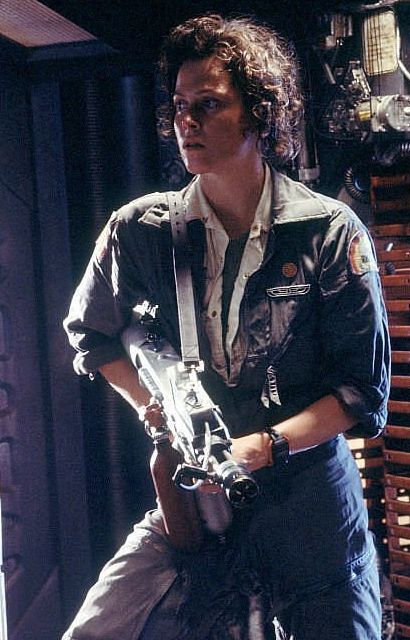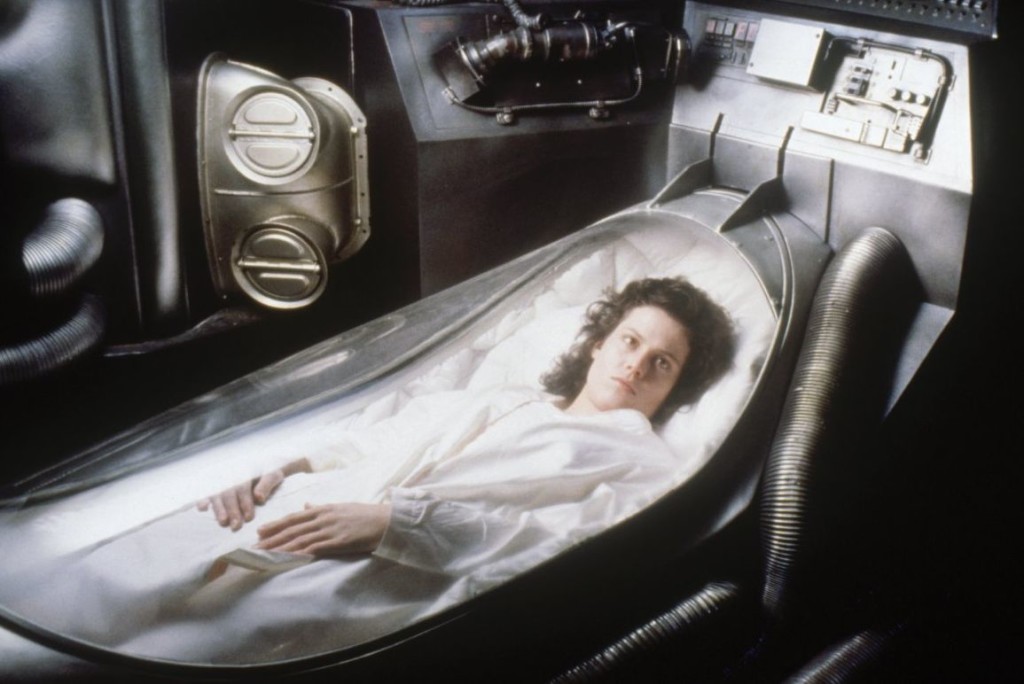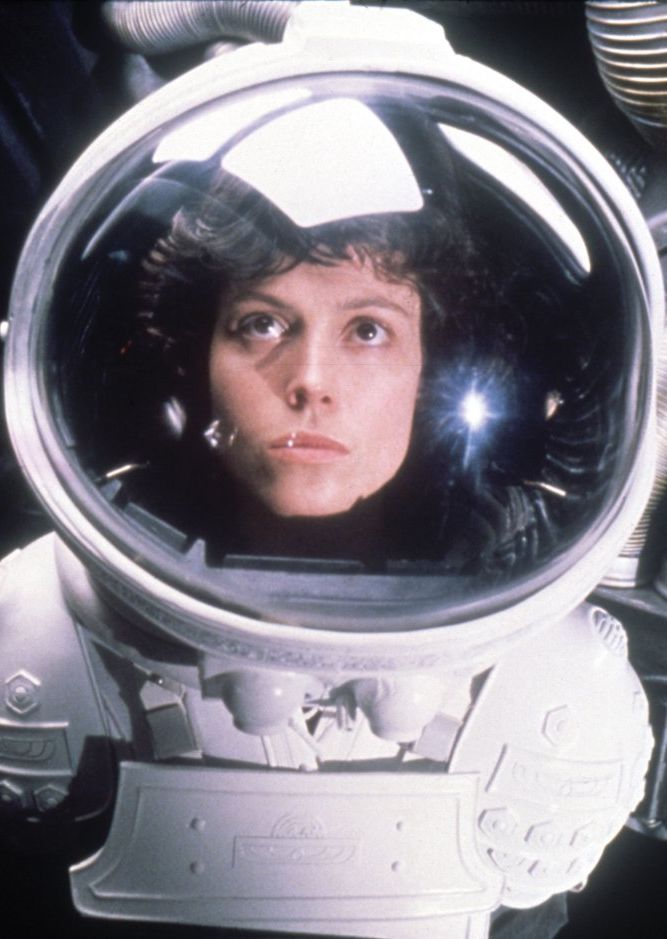 Interestingly, in the past year, all three of the computer-game to movie adaptations have had heroines: Lara Croft, Aki (Final Fantasy), and now, Resident Evil‘s Alice, who wakes up one day with a splitting headache and no memory. I’ve had mornings like that too. However, I never found myself kidnapped by a SWAT team and dragged into the Hive, an underground complex populated by the walking dead (human and canine), a peeved computer, and a mutated computer graphic monster called the Licker. My stepson somewhat gleefully informed me that, in the game, the last-named’s method of attack is to wrap its tongue round your head and pull it off. The movie doesn’t go so far – it just kinda nibbles on its victims. I felt somewhat disappointed at this display of taste and restraint, not least because it ran contrary to much of the rest of the movie. This is not a subtle movie, relying heavily on things leaping in from outside the frame, while the soundtrack goes “Boo!”.
Interestingly, in the past year, all three of the computer-game to movie adaptations have had heroines: Lara Croft, Aki (Final Fantasy), and now, Resident Evil‘s Alice, who wakes up one day with a splitting headache and no memory. I’ve had mornings like that too. However, I never found myself kidnapped by a SWAT team and dragged into the Hive, an underground complex populated by the walking dead (human and canine), a peeved computer, and a mutated computer graphic monster called the Licker. My stepson somewhat gleefully informed me that, in the game, the last-named’s method of attack is to wrap its tongue round your head and pull it off. The movie doesn’t go so far – it just kinda nibbles on its victims. I felt somewhat disappointed at this display of taste and restraint, not least because it ran contrary to much of the rest of the movie. This is not a subtle movie, relying heavily on things leaping in from outside the frame, while the soundtrack goes “Boo!”.
Of course, that doesn’t make it a bad movie. Nor do the obvious plot-holes. Here are a few examples:
- Why would an assault team choose to take a pair of amnesiac security guards on the mission with them?
- Zombie humans shamble along at classic Romero speed. Zombie dogs can run like greyhounds.
- Security lasers in a corridor zip along with a variety of heights/patters, before finally switching to an inescapable grid-pattern. Why didn’t they do that to start with?
These are forgivable – the first is necessary to the plot, and Anderson (a veteran of game/movies, having done Mortal Kombat) uses the other flaws to stage satisfyingly cool sequences, with the security lasers perhaps the highpoint of the film. It’s a shame this represents about the extent of the Hive’s defenses; I’d have liked to have seen more ingenuity of this sort. The rest of the story revolves around the T-virus, being developed by the corporation that runs the Hive – when the virus is stolen and released, the Hive goes into lock-down, with the central computer (the Red Queen, personified by a little girl hologram with a nice line in not-so-idle threats) killing all the personnel inside. Bad move, for the T-virus reanimates them, turning them into hungry cannibals, which adds an extra frisson to the assault team’s mission.
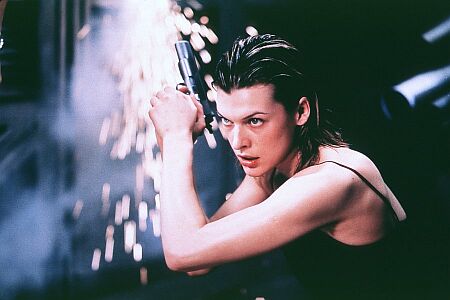 This is to…er, well, I think it was to disarm the computer, but I’m not certain about that. Mind you, I’m not certain about quite a lot in this movie. The characterisation is so woeful, I managed to combine two opposing characters into one for the entire film. And it still made sense – indeed, even after Chris enlightened me, I felt my version was better. My version would also have discarded the clock countdown, or used it as the basis for an exciting race against time through the tunnels. What’s the point of a countdown, if you don’t see it in the last ten minutes? There’s also maddeningly shallow nods to Lewis Carroll: the heroine is called Alice, who goes down a “rabbit hole”, while the computer is the Red Queen with a fondness for lopping off peoples’ heads. You should either do this stuff to the hilt, or not at all.
This is to…er, well, I think it was to disarm the computer, but I’m not certain about that. Mind you, I’m not certain about quite a lot in this movie. The characterisation is so woeful, I managed to combine two opposing characters into one for the entire film. And it still made sense – indeed, even after Chris enlightened me, I felt my version was better. My version would also have discarded the clock countdown, or used it as the basis for an exciting race against time through the tunnels. What’s the point of a countdown, if you don’t see it in the last ten minutes? There’s also maddeningly shallow nods to Lewis Carroll: the heroine is called Alice, who goes down a “rabbit hole”, while the computer is the Red Queen with a fondness for lopping off peoples’ heads. You should either do this stuff to the hilt, or not at all.
On the plus side, we do have Milla Jovovich as Alice, and Michelle Rodriguez as the Vasquezesque Rain, who are about the only easily identifiable characters. The former drives the plot along as her memory slowly returns at convenient intervals, along with her ability to kick butt. Most notable is the kung-fu vs. zombie Dobermann battle seen in the trailer, though she does the same neck-snap with the thighs thing that Famke Janssen did in Goldeneye. It’s a further step on for Jovovich, who showed action potential in The Fifth Element, yet there isn’t enough here to truly satisfy. Rodriguez, too, is underused, marching through her third straight film (Girlfight, Fast and the Furious) with the same expression. I thought I saw her smile once, near the start, but it was probably a digital effect added in post-production.
So, not as good as it could have been, with even the most undemanding viewer able to imagine improvements. Yet, as an action/SF/horror film goes, it’s not bad at all, with very little slack or let-up. The virus is released in the first two minutes, and it’s pretty much non-stop from there on, with plenty going on. Jovovich looks the part, and the final shot has me anticipating the sequel, in a kind of Evil Dead 2 way, with her character getting totally medieval on the zombies’ asses. We can but hope.
Dir: Paul W.S. Anderson
Star: Milla Jovovich, Michelle Rodriguez, Eric Mabius, James Purefoy





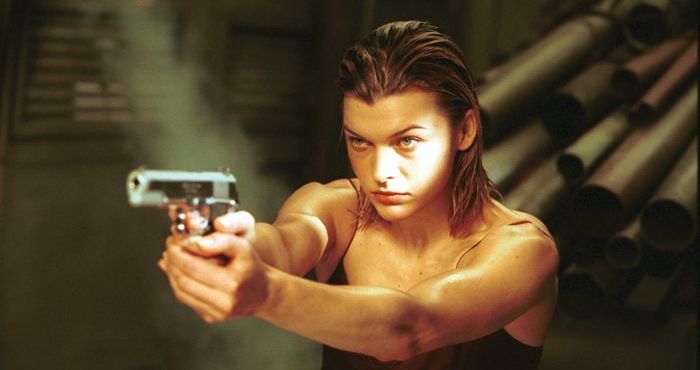
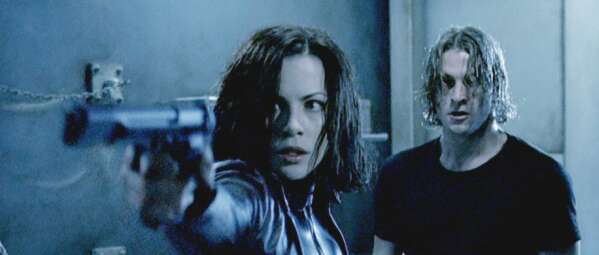 ★★★½
★★★½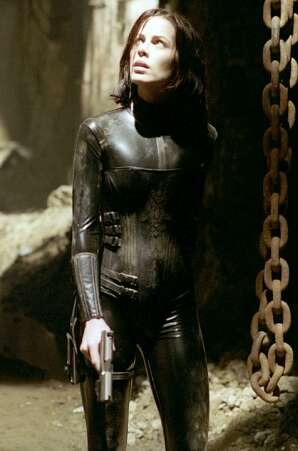 The day before this opened, we watched a “documentary” on AMC, entitled Fang vs. Fiction: The Real Underworld of Vampires and Werewolves. Quotes used advisedly, as they must be when the program interviewed someone who said he was a werewolf. Regrettably, despite our yelling at the TV, he refused to transform on camera, claiming it was too taxing. Wuss. What it did demonstrate was that the old stereotypes are alive and well – or at least
The day before this opened, we watched a “documentary” on AMC, entitled Fang vs. Fiction: The Real Underworld of Vampires and Werewolves. Quotes used advisedly, as they must be when the program interviewed someone who said he was a werewolf. Regrettably, despite our yelling at the TV, he refused to transform on camera, claiming it was too taxing. Wuss. What it did demonstrate was that the old stereotypes are alive and well – or at least 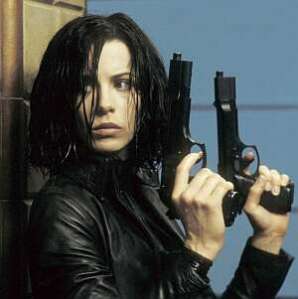 What doesn’t work, on any level, is the Selene-Corvin relationship, which is never given any reason to blossom as it does. Worse, still, though the film is told largely from Selene’s point of view, at the end, it’s Corvin who has to battle against The Big Bad [and I’d best not say who that is; the film takes delight in pulling the carpet out from under the viewer]. Sure, Selene gets to deliver the coup de grace – and impressively so – but reducing the heroine to someone left holding her man’s coat, is mostly why this one doesn’t get our seal of approal. Making it even more embarrassing, by this stage, the hero looks like a blue version of the Incredible Hulk.
What doesn’t work, on any level, is the Selene-Corvin relationship, which is never given any reason to blossom as it does. Worse, still, though the film is told largely from Selene’s point of view, at the end, it’s Corvin who has to battle against The Big Bad [and I’d best not say who that is; the film takes delight in pulling the carpet out from under the viewer]. Sure, Selene gets to deliver the coup de grace – and impressively so – but reducing the heroine to someone left holding her man’s coat, is mostly why this one doesn’t get our seal of approal. Making it even more embarrassing, by this stage, the hero looks like a blue version of the Incredible Hulk.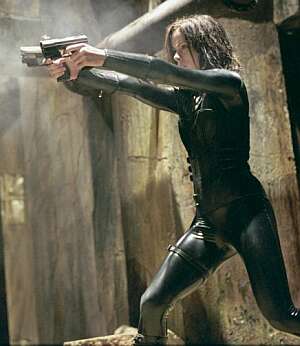 There are some plot points which are never quite explained. At one point, Selene hides Corvin in a safe house, which then mysteriously comes under attack from the lycanthropes. How did they know? Why the werewolves don’t take advantage of the daylight, and avoid moving around at night when the vampires are about? It probably also gets rather too embroiled in creating an entire society and culture for the vampires, explaining stuff not necessary to a 90-minute movie – that’s why it’s actually a 121-minute movie.
There are some plot points which are never quite explained. At one point, Selene hides Corvin in a safe house, which then mysteriously comes under attack from the lycanthropes. How did they know? Why the werewolves don’t take advantage of the daylight, and avoid moving around at night when the vampires are about? It probably also gets rather too embroiled in creating an entire society and culture for the vampires, explaining stuff not necessary to a 90-minute movie – that’s why it’s actually a 121-minute movie.